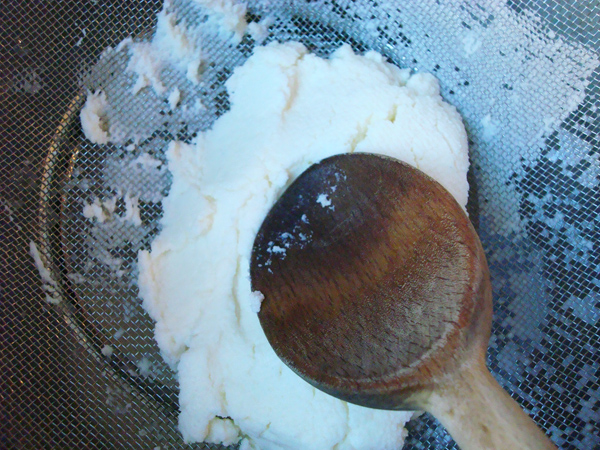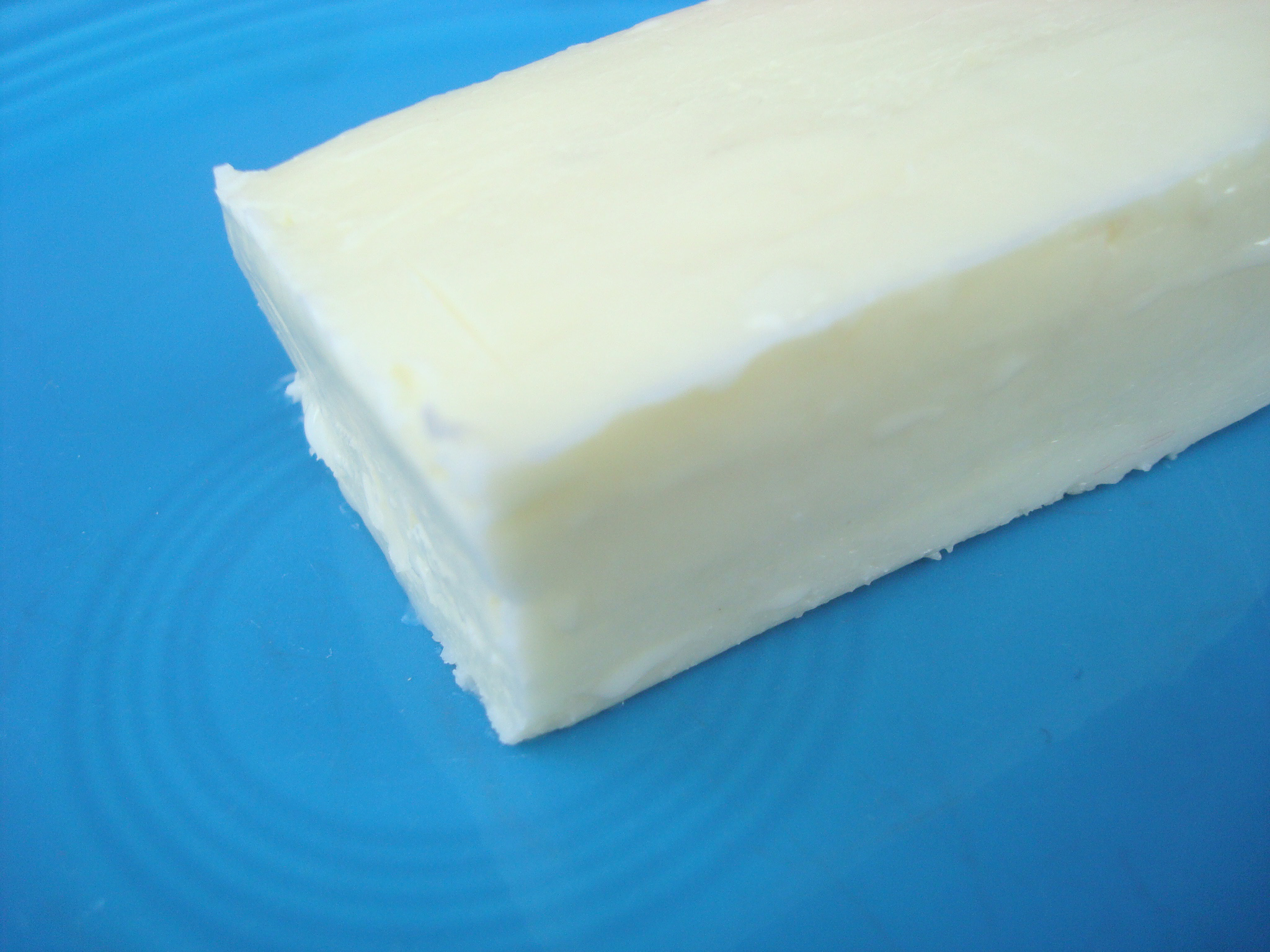What follows is possibly the simplest and best food and cooking tutorial you’ll ever come across: how to make butter at home. You don’t even need a butter churn.

Photos via CakeSpy
Making butter at home is ridiculously easy, and the results are gratifying: homemade butter will make the tastiest buttercream you’ve ever tasted, and is just the topping to do justice to a beautiful loaf of homemade bread. Best of all, the only things you need are a little heavy cream, some salt (if desired) and a mode of mixing. If you don’t have a stand mixer, you can use a blender or hand mixer. If you have none of these but a whisk and an arm of steel, it can still be done. There’s even a cool method of making butter by vigorously shaking a jar.
Here’s how to make butter at home:

Recipe notes:
- Making the butter using 16 ounces of heavy cream at a time is a sensible amount. It’s not so much that it will all fly out of the mixer and make a rainstorm of cream in your kitchen, but it’s enough of a yield that you will have enough butter to work with and enjoy. This recipe can, however, be made with a smaller quantity of cream.
- The amount of salt in the butter is up to you. If you are using it for baking, you may decide not to add salt to the butter, instead adding salt as specified in your recipe. If you’re using your butter as a topping for bread or biscuits, you may find that adding a pinch of salt brings the creamy flavor to life.
- If you think the instructions sound similar to those of making whipped cream, you’re right. If you’ve ever whipped cream too long and it started to become clumpy, you were actually almost to the point of making butter. After the vigorous whipping, the solid fat will begin to separate, and that will be your butter.
- The instructions below recommend using a stand mixer as your mode of mixing. If you don’t have a stand mixer, you can also use a blender on high speed or a whipping setting, a hand mixer, a food processor with a whip setting, or even just put the cream in a bowl to whisk by hand.
Ingredients:
- 16 ounces heavy cream
- salt, to taste (if desired)
Step 1:
Place the heavy cream into the bowl of a stand mixer fitted with the whisk attachment. Begin to whip on low speed, and gradually increase the speed to high (some mixers will even have a “whipping cream” setting). First, it will start to become frothy.

Step 2:
Continue to whip. At a certain point, the cream will begin to turn into whipped cream. Keep mixing. The mixture will begin to clump, sort of like you messed up the whipping cream. Don’t be scared. This is actually just what you want when making butter.
Step 3:
After 5 to 10 minutes (it can vary depending on your mixer), the mixture will begin to change. It will turn into a thick substance as the fat begins to separate, leaving a thin, light white liquid behind (this is the skimmed milk from the fat). It may not look like it, but you’ve now got butter! This is the point at which you’ll stir in salt, if using.

Step 4:
Here’s what you do to actually make it look and taste like butter. Stop the mixing, as the thin liquid has a tendency to spray up when mixed. Now, drain away that milky liquid. Really drain it. With impeccably clean hands, or holding a cheesecloth, squeeze the butter into a ball — you’ll feel the droplets squeezing out. If you’re uneasy about handling the butter (or will be serving this to a crowd who might be uneasy about it), you can press it against a mesh sieve with the back of a wooden spoon. You’re not trying to press it through the mesh, but rather to press the liquid out.

Step 5:
Once the liquid has all been drained, store in an airtight container, or roll it in plastic wrap or in parchment paper tubes. If you’re storing in plastic or parchment, you can press it against a hard surface after rolled to give it square edges, so it resembles sticks of butter. Keep in mind that to use these sticks as a stand-in for commercial sticks of butter, you’ll have to make sure they are the correct weight: four ounces each.

If you’re using the butter within the next few days, keep it in the refrigerator; if it will be a while, store it in the freezer.
Now that you’ve made the butter, you can consider making your own flavored butters.
Below are some suggestions, but the sky’s the limit when it comes to flavors to add to your butter. For instance, adding herbes de Provence to butter for a fantastic accompaniment to a French meal, or perhaps an Italian spice mix would taste nice to flavor your butter if you’re using it on bread to be served alongside a pasta dish.
Honey butter
- 8 ounces homemade butter, softened
- 1 1/2 tablespoons honey
Place the softened butter in a mixer (or mix by hand). Mix with the honey until combined. Store in an airtight container.
How to use it: spread atop bread or biscuits, top pancakes or quick breads; fantastic for baking.
Lemon pistachio butter
- 8 ounces homemade butter, softened
- 1 teaspoon fresh lemon juice
- 1/2 teaspoon lemon zest
- 2 tablespoons very finely chopped pistachios
Place the softened butter in a mixer (or mix by hand). Mix with the lemon juice, lemon zest and pistachios until combined. Store in an airtight container.
How to use it: spread atop bread or biscuits, top pancakes or quick breads; stellar as an ingredient in buttercream.
Herbes de Provence butter
- 8 ounces homemade butter, softened
- 1 tablespoon herbes de Provence (more or less to taste)
Place the softened butter in a mixer (or mix by hand). Mix with the herbes de Provence until combined. Store in an airtight container.
How to use it: with French cuisine, any type of bread, fish and vegetables.
Bacon butter
- 8 ounces homemade butter, softened
- 1 strip bacon, fried or baked crispy, fat drained, and very finely diced
Place the softened butter in a mixer (or mix by hand). Mix with the bacon until combined. The bacon may leave slight streaks in the butter at first, but as you mix, they will disappear. The color is somewhat ruddy-yellow, but the taste is sinfully magnificent. Store in an airtight container.
How to use it: spread atop bread or biscuits, top pancakes or quick breads; serve with steak, delicious with French toast; this is a fantastic addition to a brunch spread.

Share tips, start a discussion or ask one of our experts or other students a question.
No Responses to “I Can't Believe It's Not Store-Bought: How to Make Butter at Home”